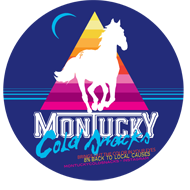Staying Safe
In the recent years more than one third of all avalanche deaths were snowmobilers, according to the U.S Snowmobile Avalanche Fatalities. Historically, over the last 45 years, less than seven percent of avalanche deaths were snowmobilers. Of these deaths, most of the victims were improperly prepared to be in the back country and survive an avalanche, having little or no safety equipment.
If you want to stay safe, and be a steward of safety in the back country, here are steps and equipment you should take,
Non-Equipment Safety Tips
First and foremost, the best way to prevent injuries and death in the back country is education. There are several courses offered in back country safety. Washington state, one of the statistically higher areas for snowmobile deaths, also has a lower percentage of riders who have completed a level one course. Check out Avalanche.org for more information.
In addition to always carrying the equipment below, regular checks on that equipment should be done at the start of the season, and before your rides. The day you forget to check your equipment could be the day you need it most.
Lastly, even though you have an airbag, there are only so many situations they can help. Ride with safety in the slope or run-out area, your airbag works better not at the bottom of an avalanche. Your airbag is not a replacement for proper education, habits, or other equipment.
What Equipment Should I Bring?
The three most important pieces of equipment to always carry with you when snowmobiling no matter what are: a beacon, a probe, and a sturdy metal shovel. There are also pre-made avalanche safety kits including all three. These safety equipment may seem expensive, but when the safety of you and your squad are in question, these are all necessary and well worth it. Make sure you get a metal shovel, as a plastic shovel doesn’t have what it takes to cut through the dense snow in an avalanche, and could break before you even need it. For beacons, opt for a 3 antenna beacon, offering better range, and very importantly, depth.
After you have your most necessary gear, it’s also important to carry additional gear, including but not limited to:
Two-way radios in case anyone in your group gets lost
Sun protection, even if bundled up, the snow can reflect enough light to burn you when you least expect it.
Food and water
First aid supplies
Proper insulated clothing (if your feet are getting cold in the back country check out this guide to stay warm).
Don’t Sacrifice Performance for Safety
If there ever was something to sacrifice performance for, safety would be it. However, thanks to modern technology and snowmobile racks such as the Mo Pros Ajoosta GR Large rack, you can securely bring all the safety equipment you need, plus more, keep your backpack light, and strengthen your snowmobile, in addition to additional benefits detailed here.
What to Keep in Your Pack
In order to stay light and shred the best you can, you should only keep a limited amount of things on your person, in your bag. These include your water, snacks, beacon, probe, extra goggles, and extra gloves. The rest you can keep on your snowmobile rack, worry free and safe in a water proof bag, holding all your necessities and more.
What to Keep on Your Rack
Mo-Pros Snowmobile Rack and Bag Combo
On your sled you should have a snowmobile rack, allowing you to not only carry the aforementioned safety gear, waterproof bags, but also your shovel, skis, snowboards, and a myriad of other possibilities.
On your rack you should keep all the other safety equipment you bring. This will keep you lighter and less encumbered not having to worry if you’ve got your gear and if it’ll be safe.














